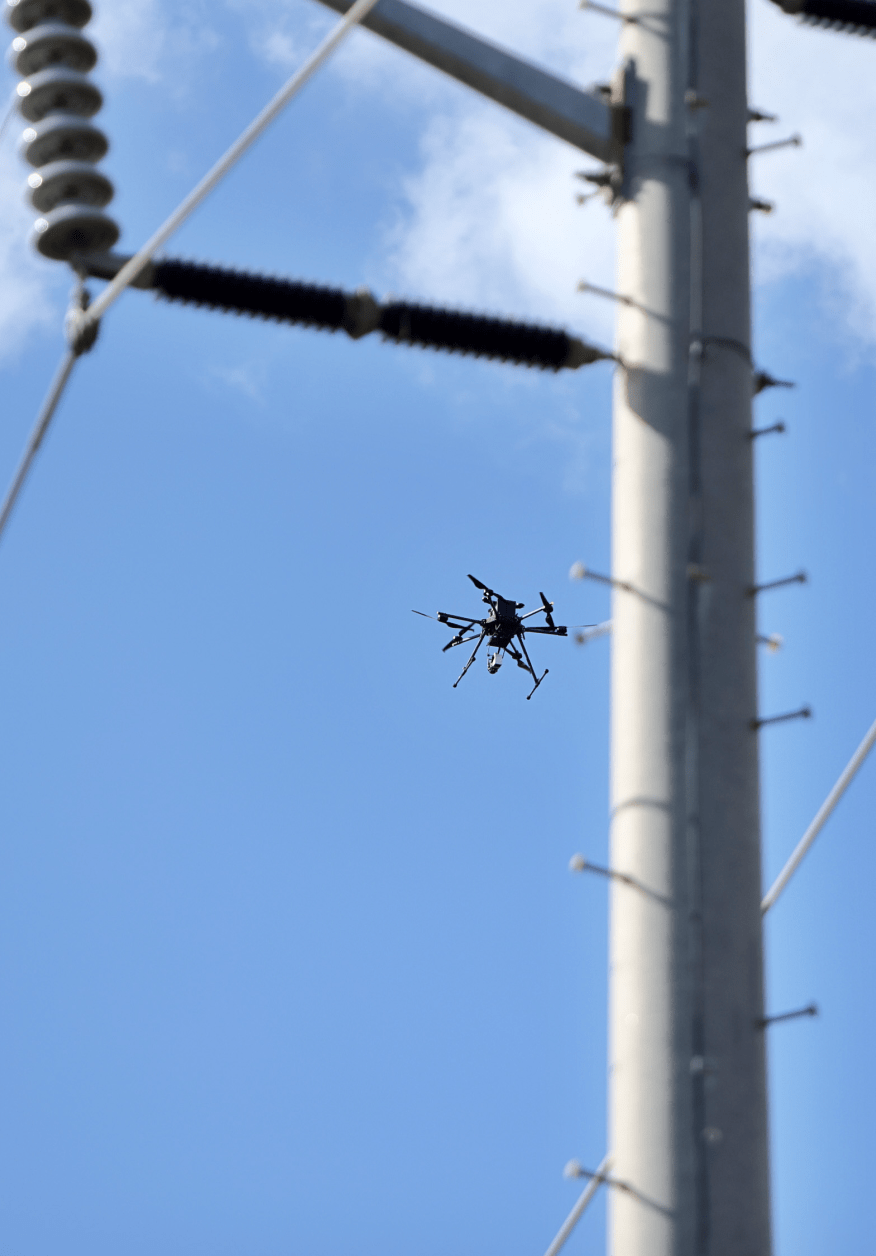
Integrating drones or uncrewed systems into electrical utility and energy sectors represents a significant step forward in terms of safety, efficiency, and cost-effectiveness. As this technology continues to evolve, drones will likely play an increasingly important role in maintaining the reliability and integrity of our power grids. It’s a clear example of how innovative technology can transform traditional industries and pave the way for a more sustainable future.
Working on generation, transmission, and distribution systems is costly, complex, and highly dangerous. Gresco UAS solutions enable you to carry out cost-effective and efficient inspections and evaluations while minimizing the health and safety risks to your personnel. Leverage thermal imaging, drone mapping, and geospatial technologies to complete tasks efficiently and at a fraction of the cost of traditional methods.
Drones are reshaping the transmission sector by facilitating rapid, comprehensive assessments of power lines and support structures. Their ability to cover vast distances quickly and capture detailed data from difficult-to-access areas allows for more frequent and thorough inspections. This not only enhances the reliability of the electrical grid but also improves safety by reducing the need for manual inspections in hazardous conditions.
How are Drones Used in Transmission?
Conducting aerial mapping and surveying to assess line conditions
Inspecting components like insulators and cotter pins without manual climbing
Managing vegetation to prevent encroachment on power lines
Assisting in line pulling operations
Detecting corona discharge to prevent equipment failure


Drones are modernizing electricity distribution by identifying potential issues to prevent outages, especially critical in post-disaster scenarios for quick damage assessment and repair prioritization, significantly reducing downtime. They also enhance substation safety and efficiency, offering detailed equipment inspections to identify hot spots and defects, thereby preventing costly failures. Additionally, drones are instrumental in right-of-way maintenance, using multi-spectral imaging to monitor for vegetation encroachment and hazards, ensuring the reliability of utility infrastructure.
How are Drones Used in Distribution?
Using thermal cameras to inspect lines and identify potential issues
Quickly assessing damage after natural disasters to expedite recovery
Monitoring pole health and preventing unexpected power outages
Managing vegetation to ensure clearances from power lines
Performing post-storm assessments to prioritize repairs
Identification of hot spots and defects
Detailed inspections of complex components
Security surveillance
Monitor right-of-ways for vegetation and other encroachments
The generation sector has deployed drones to enhance inspections in power plants, improving access and safety. Drones navigate dangerous or confined spaces, delivering high-quality data that can inform maintenance decisions and operational improvements. This technology ensures that generation facilities operate at peak efficiency, contributing to the reliability of power supply.
How are Drones Used in Generation?
Mapping and surveying the interior of generation plants
Conducting inspections in dangerous or hard-to-reach areas
Performing confined space inspections to avoid human entry


Solar farm management organizations are utilizing drones to detail the inspection of vast arrays of photovoltaic panels. Aerial drones offer a unique perspective that ground-based inspections cannot match, identifying panel defects or damage efficiently. This capability is crucial for maintaining optimal energy production and extending the lifespan of solar installations.
How are Drones Used in Solar?
Mapping and surveying solar farms to assess panel conditions
Using thermal imaging to identify defective or underperforming panels
Inspecting panels for damage after severe weather events
The wind sector benefits from drone technology by enhancing the safety and efficiency of turbine inspections. Drones eliminate the need for manual climbing, reducing the risk of accidents and allowing for more frequent inspections. This ensures turbines operate efficiently, maximizing energy production and reducing the need for costly on-site maintenance teams.
How are Drones Used in Wind?
Inspecting turbine blades for wear, damage, or inefficiencies.
Performing confined space inspections inside turbine housings.
Avoiding the need for rope access or manual climbing, enhancing safety


In the oil and gas industry, drones are reinventing the way inspections and monitoring are conducted. They provide a safe means to survey vast, often inaccessible areas, delivering critical information on infrastructure integrity, potential leaks, or environmental compliance issues. This not only improves operational safety but also supports proactive maintenance and emergency response efforts.
How are Drones Used in Oil & Gas?
Conducting industrial inspections of pipelines, wells, and platforms
Surveying and mapping large areas for exploration and monitoring
Supporting emergency response efforts with aerial surveillance
Detecting leaks, corrosion, and structural anomalies

Contact the Energy experts at Gresco UAS